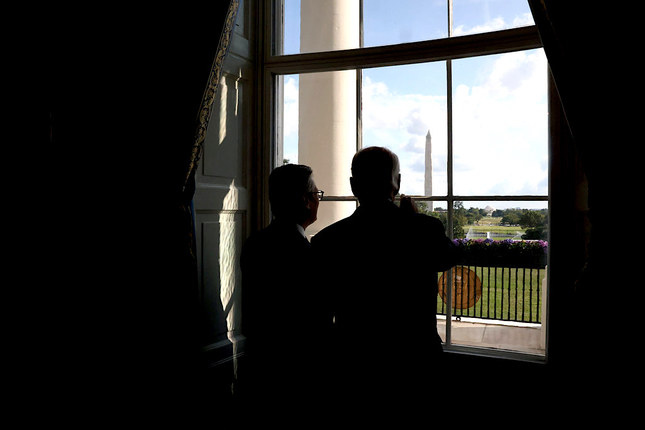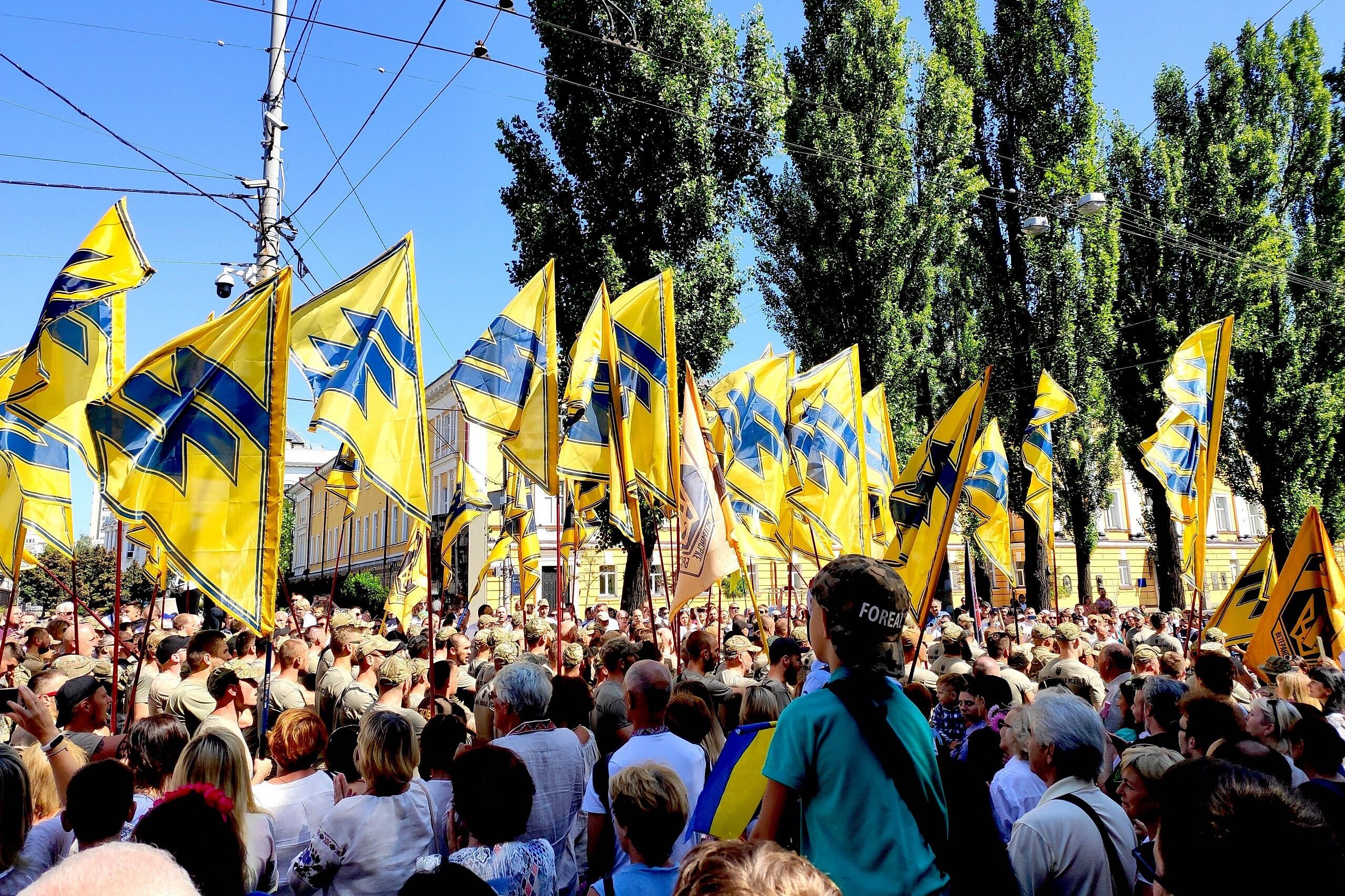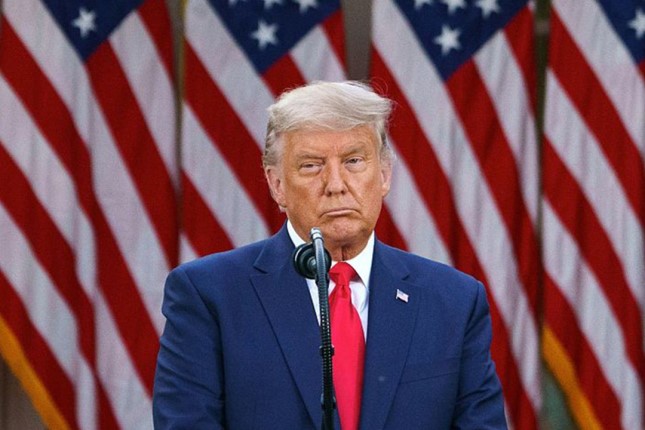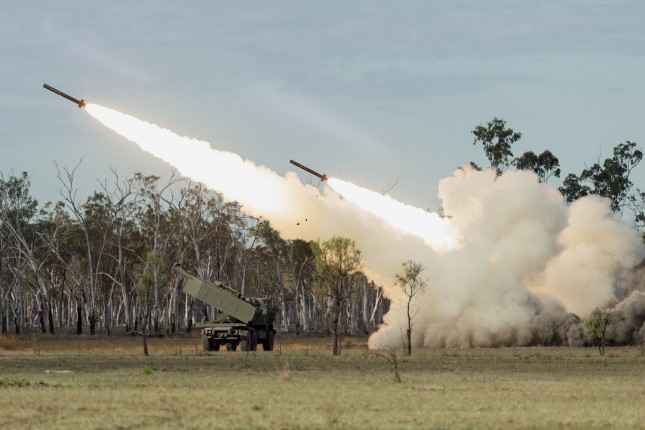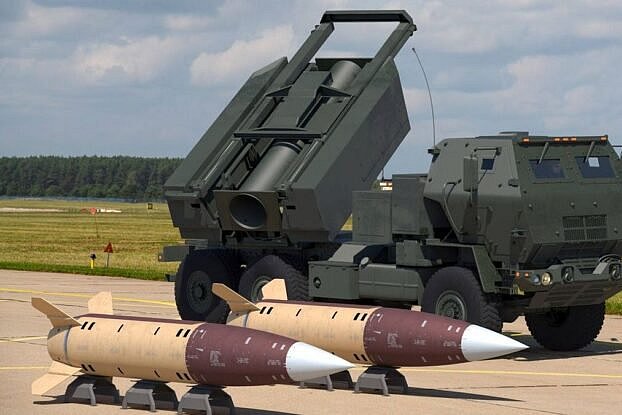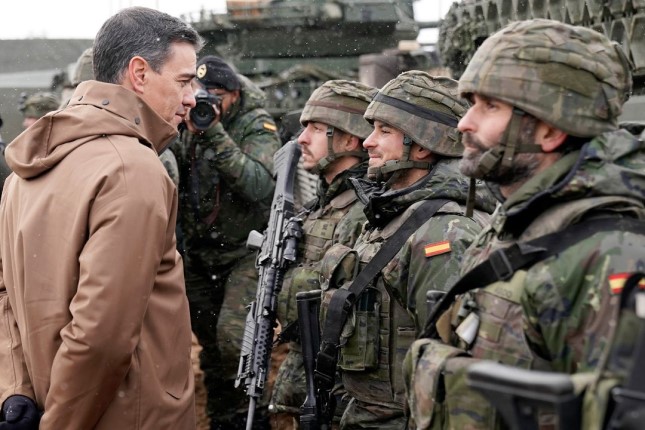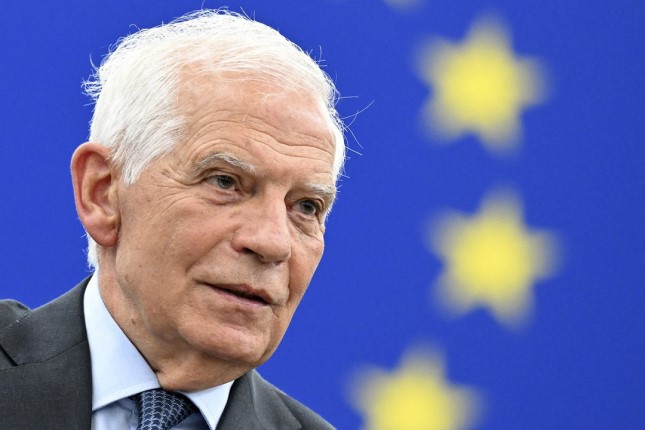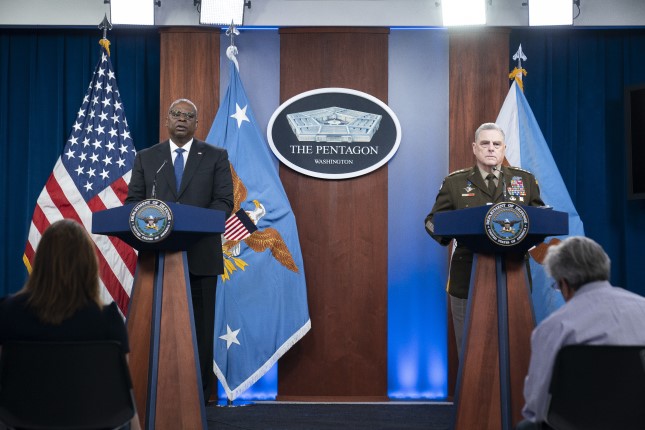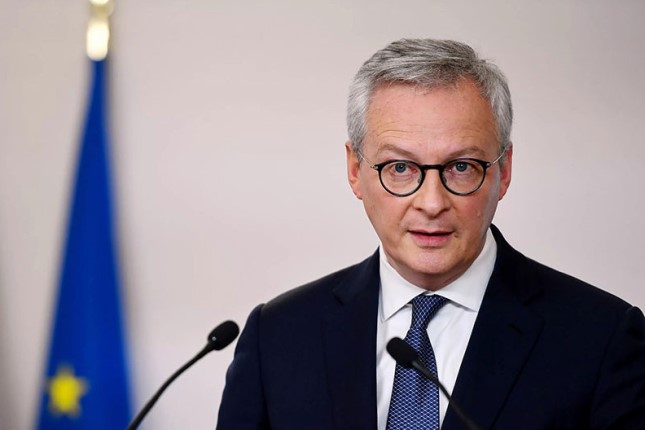Most Americans approached last weekend thinking about how they would spend the much-anticipated end of the work week with their friends and family.
Few realize how close they came to actualizing the scenario so horrifyingly spelled out in Annie Jacobsen’s alarming must-read book, Nuclear War: A Scenario.
72 minutes.
That is all it takes to end the world as we know it.
That is less time than most movies playing at the local cinema.
Most people could not drive to the local home improvement store to buy the materials needed to do the little repairs around the home that usually wait for the weekend.
Walk the dogs?
Play with the kids?
Forget about it.
72 minutes.
And everything you thought you lived your life for would be dead.
And if you survived?
To quote Nikita Khrushchev, “The survivors would envy the dead.”
Ukraine, together with many of its NATO allies, has been asking for permission from the United States, the United Kingdom, and France to be able to employ precision-guided long-range weapons systems provided by these countries against targets deep inside Russia.
On Sept. 6, at a meeting of the Ramstein Contact Group, a forum where U.S.-NATO military support to Ukraine is coordinated, Ukrainian President Volodymyr Zelensky personally appealed to the group for more weapons support from its Western allies and called on allies to allow Ukraine to use the weapons they provided to strike deeper inside Russia.
Zelensky Seeks "Long-Range Capability"
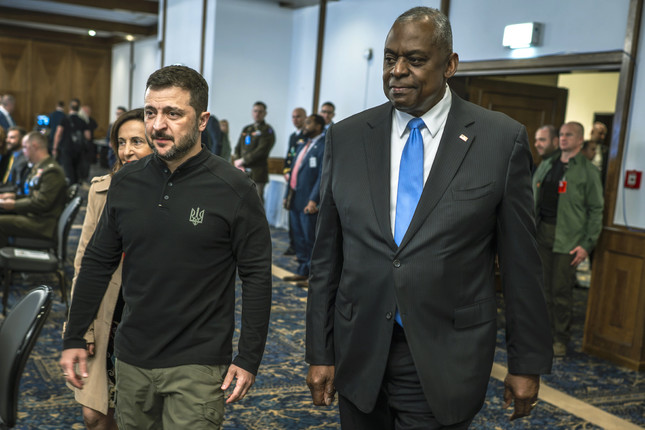
Zelensky and U.S. Secretary of Defense Lloyd Austin at the Ukraine Defense Contact Group meeting at Ramstein Air Base in Germany, on Sept. 6. Photo: DoD/Chad J. McNeeley
“We need to have this long-range capability,” Zelensky said, addressing the attendees, who included U.S. Secretary of Defense Lloyd Austin,
“not only on the divided territory of Ukraine but also on Russian territory so that Russia is motivated to seek peace. We need to make Russian cities, and even Russian soldiers think about what they need: peace or Putin.”
Secretary Austin, in comments made afterwards, said he didn’t think the use of long-range missiles to strike inside Russia would help end the war, adding that he expected the conflict would be resolved through negotiations. Moreover, Austin noted, Ukraine had its own weapons capable of attacking targets well beyond the range of the British Storm Shadow cruise missile.
Despite Austin’s pushback, President Joe Biden appeared to be on track to give Zelensky the green light he was looking for regarding the use of British-provided Storm Shadow cruise missiles and U.S.-provided long-range ATACMS (Army Tactical Missile System) missiles for strikes on Russian soil.
On Sept. 11, U.S. Secretary of State Antony Blinken, accompanied by British Foreign Secretary David Lammy, visited Ukraine, where they held meetings with Zelensky and his newly appointed foreign minister, Andrii Sybiha.
Blinken & Lammy in Ukraine
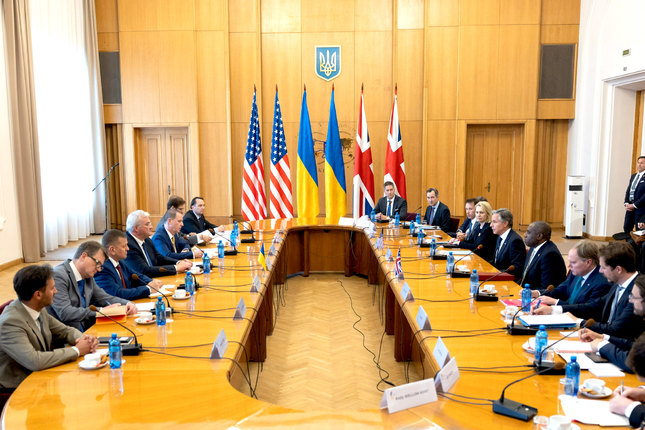
Blinken and Lammy, on right side of table in center, meeting with Sybiha, opposite them, in Kiev on Sept. 11. Photo: State Department/Chuck Kennedy
Blinken and Lammy, however, failed to make the announcement the Ukrainians were waiting with bated breath to hear. Instead, Blinken and Lammy reiterated the full support of their respective nations to Ukraine’s victory, adding that they would adapt their support to meet Ukrainian needs. “The bottom line is this: We want Ukraine to win,” Blinken said after his meeting with Zelensky.
The stage was now set for Keir Starmer, the prime minister of the United Kingdom, to fly to Washington, D.C., last Friday, where he would meet with Biden and jointly agree to give Ukraine permission to use Storm Shadow and ATACMS against targets inside Russia.
Starmer Goes to Washington

Starmer with members of the press on his way to Washington last Friday. Photo: Simon Dawson / No 10 Downing Street, CC BY-NC-ND 2.0
Russia has long made it clear that it would view any nation which authorized the use of its weapons to strike Russia as a direct party to the conflict.
In comments to the media in Russia last Thursday — one day before the Biden-Starmer meeting at the White House — Russian President Vladimir Putin made it clear that any lifting of the restrictions on Ukrainian use of U.S.- and U.K.-provided long-range weapons would change “the very essence of the conflict.” He said:
“This will mean that NATO countries, the United States, European countries are fighting Russia. And if this is the case, then…we will make appropriate decisions in response to the threats that will be posed to us.”
Kremlin spokesperson Dmitry Peskov, speaking after Putin’s announcement, noted that the Russian president’s words were “extremely clear” and that they had reached their intended audience — U.S. President Biden.
Biden didn’t seem happy about the message. In responding to a question from reporters prior to his meeting with Prime Minister Starmer at the White House about what he thought about Putin’s warning, Biden snapped angrily, “I don’t think much about Vladimir Putin.”
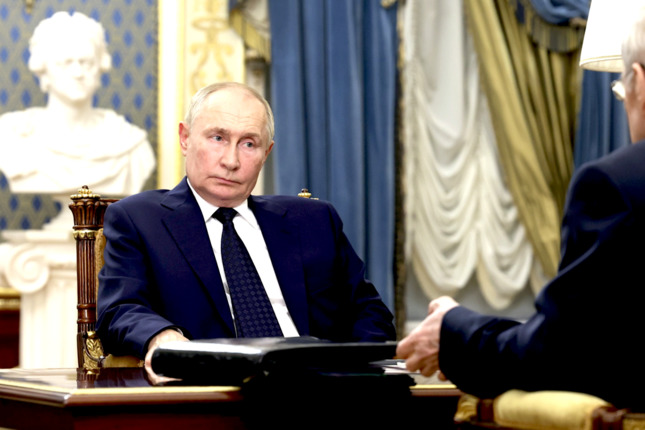
Putin in a meeting in Moscow last week. Photo: Kremlin
The evidence suggests otherwise.
At a White House press conference that same day, Robbie Gramer, the White House correspondent for Politico, asked John Kirby, the spokesperson for the National Security Council, “Do you take Putin at his words that strikes into Russian territory by U.S. — or British — or French-made missiles would actually expand the war?”
Kirby’s response was telling in many ways. “It’s hard to take anything coming out of Putin’s face at his word. But this is not rhetoric that we haven’t heard from him before, so there’s really not a lot new there.”
Gramer followed up: “So, in other words, you know, in the deliberations about this long-range strike, threats from Putin are not a big factor for you guys in your deliberations on this?”
“Well,” Kirby responded,
“you didn’t let me finish the answer, so let me try…I never said, nor have I — would we ever say that we don’t take Mr. Putin’s threats seriously. When he starts brandishing the nuclear sword, for instance, yeah, we take that seriously, and we constantly monitor that kind of activity. He obviously has proven capable of aggression.
He has obviously proven capable of escalation over the last, now, going on three years. So, yeah, we take these comments seriously, but it is not something that we haven’t heard before. So, we take note of it. Got it. We have our own calculus for what we decide to provide to Ukraine and what not. And I think I’d leave it there.”
Just to drive the point home, Russia’s ambassador to the United Nations, Vassily Nebenzia, told the Security Council last Friday that NATO would “be a direct party to hostilities against a nuclear power,” if it allowed Ukraine to use longer range weapons against Russia. “You shouldn’t forget about this and think about the consequences,” he declared.
"Don’t Play With Fire"
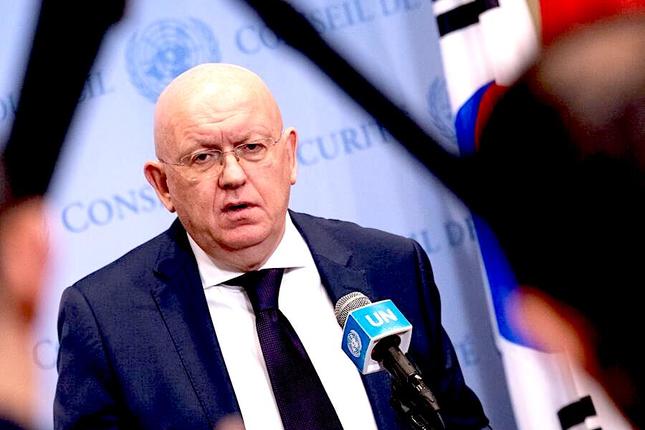
Nebenzia in June. Photo: UN Photo/Manuel Elías
The finishing touches on driving home the seriousness of Putin’s warning was left to the Russian ambassador to the United States, Anatoly Antonov. Speaking to the Russian media also last Friday Antonov said he was surprised that many American officials believed that
“if there is a conflict, it will not spread to the territory of the United States of America. I am constantly trying to convey to them one thesis that the Americans will not be able to sit it out behind the waters of this ocean. This war will affect everyone, so we constantly say – do not play with this rhetoric.”
Putin’s words had caught the attention of several former U.S. government officials, who had called Antonov for clarification.
“Yesterday’s statements from Vladimir Putin were weighed very carefully here. Several ex-officials called me asking to explain what actually stands behind those statements. I simply replied: ‘Don’t play with fire.’”
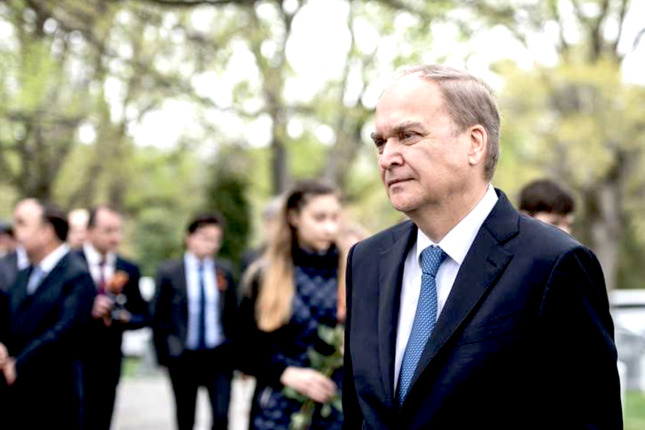
Antonov at Arlington National Cemetery in 2018, during a commemoration of the cooperation of U.S., Soviet and Allied armed forces during World War II. Photo: U.S Army/ Elizabeth Fraser, Public domain
Antonov’s sentiments were likely echoed through existing back-channel communications used by the Department of Defense and the C.I.A.
In the end, the message got through — Biden pulled back from giving Ukraine the permissions it sought.
Most Americans are unaware about how close they came to waking up Saturday morning, only to find that it was their last.
Ukraine Was Ready to Launch
Had Biden yielded to Starmer’s pressure (the British, together with Ukraine and several NATO nations, believed that Putin was bluffing), and signed off on the permission, Ukraine was prepared to launch strikes on Russia that night.
(British soldiers deployed in Ukraine would be needed to operate the Storm Shadows and they are already there, according to German Chancellor Olaf Scholz, who has refused to send similar weapons to Ukraine.)
Russia would likely have responded with conventional attacks on Kiev using new weapons, such as the Avangard hypersonic warhead, which would each deliver a blow equivalent to 26-28 tons of explosives.
Russia would also most likely have struck NATO targets in Poland and Romania where Ukrainian fighters are based. And, lastly, Russia would have struck British military targets, possibly including those on the British Isles.
This would prompt a NATO retaliation under Article 5, using a large number of NATO long-range strike weapons targeting Russian command and control, airfields, and ammunition storage facilities.
The Russian response would most likely involve the launching of more Avangard conventional warheads against NATO targets, including Ramstein airbase and NATO headquarters, as well as airbases from which strikes against Russia were launched.

NATO headquarters in Brussels. Photo: NATO)
At this juncture the United States, using nuclear employment plans derived from a nuclear posture which emphasizes the pre-emptive use of low yield nuclear weapons to “escalate to deescalate”— i.e., force Russia to back down through a demonstration of capability — would authorize the use of one or more low-yield nuclear warheads against Russian targets on Russian soil.
But Russian doctrine has no capacity for engaging in a limited nuclear war. Instead, Russia would respond with a general nuclear retaliation targeting all of Europe and the United States.
Whatever U.S. strategic forces that survived this onslaught would be fired at Russia.
And then we all die.
72 minutes.
And the world ends.
We were one stroke of the pen away from this outcome on Friday, Sept. 13, 2024.
This isn’t a drill.
This isn’t an academic exercise.
This is the real world.
This is life or death.
This is your future held hostage by a madman in Kiev, backed by lunatics in Europe.
The question is — what are we going to do about it?
There is an election on Nov. 5 where the next commander-in-chief of the United States will be selected by “we, the people.”
This person will be the one holding the pen in any future scenario where life or death decisions that could manifest into a general nuclear war will be made.
It is incumbent upon we, the people, to make sure that Americans demand the candidates for this office articulate their policy vision regarding the war in Ukraine, the prospects of peace with Russia, and what they will do to prevent the outbreak of nuclear war.
But they won’t do that if we, the people, remain silent about the issue.
Stand up.
Speak out.
Demand to be heard.
72 minutes is all it takes to end life as we know it.
We almost all died over the weekend of Sept. 14-15, 2024.
What are we going to do to make sure that doesn’t happen again?
Main photo: U.K. Prime Minister Keir Starmer and U.S. President Joe Biden at the White House last Friday. © Simon Dawson / No 10 Downing Street, CC BY-NC-ND 2.0
Source: Consortium News
